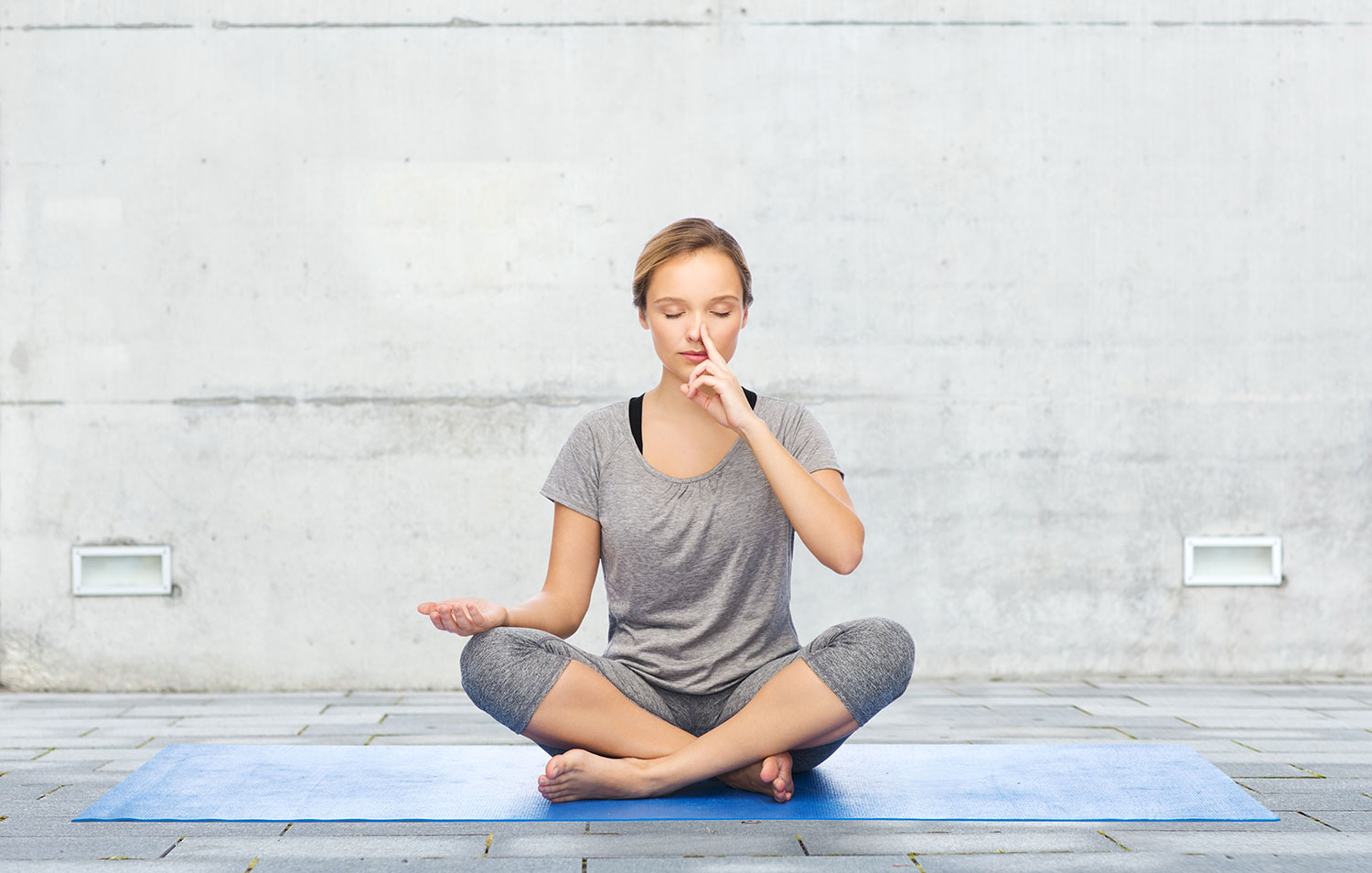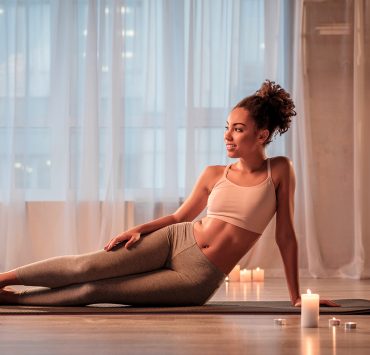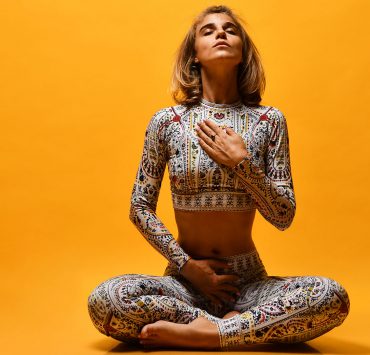
Having been a teacher’s assistant at over 50 yoga teacher…
There are thousands of chakras on your body and in your energy field, but most people are familiar with the 7 main chakras that stem from your sacrum to the top of your head. In English, the Sanskrit word “chakra” means “wheel.” Each chakra is like a spinning wheel of energy that represents a different element of life and being. When all 7 chakras are in balance, you will feel vital, safe, inspired, and tuned in to your natural potential. If your chakras are out of balance, it can manifest in various ways depending on which energy center needs attention. Balancing and aligning your chakras should be a daily practice, as each day brings new challenges and opportunities for growth.
Working with the chakras can be very fun and relaxing, and it can bring a new sense of purpose to your goals, relationships, visions, and dreams. One of the best ways to work with the chakras is through gentle yin yoga, meditation, and pranayama. Below is a custom yin yoga sequence that will help balance and align your chakras.
Wearing A Blindfold & Other Helpful Yin Yoga Props

One of the best things you can do before practicing yin yoga is gather your yoga props. Poses in yin yoga are held for a longer period so that you can sink into the pose mentally and physically and experience a deep release. It is helpful to practice in a quiet space that feels safe and comfortable. Some people like to put on gentle music to begin the practice, but overall it is better to practice in quiet so the music does not steer your space emotionally or creatively. The quietness will allow repressed thoughts and feelings to arise so they can be released.
At a minimum you will need two thick folded blankets and two yoga blocks for this practice. You may also want a yoga strap, bolster, and blindfold. Covering your eyes with an eye pillow is nice, but it puts pressure on your eye sockets, which can prevent the body from entering rest and relaxation fully. One trick from restorative yoga is to take an ace bandage or silk cloth and wrap it over your head. That way, you can lift it up and down easily while transitioning between poses, and still get the relaxing darkness in all of the poses.
Constructive Rest

Begin your yoga practice in constructive rest. This pose centers your mind and brings a gentle relaxation to your body. Constructive rest is cooling and softens the organs in the lower belly and abdomen, which is a wonderful way to begin any practice.
To get into the pose, lie on your yoga mat on your back. Bend your knees to a 45-degree angle and keep your feet within the frame of your body. Walk your feet out slightly and prop your knees together. Close your eyes and place your hands gently by your side or palm-down on your lower belly. Breathe smoothly and at your natural rhythm. Take 10 breaths before exiting the pose and coming to a seated position.
Alternate Nostril Breathing Pranayama

Alternate nostril breathing is by far one of the best ways to open and clear the energy pathways in your body. In Sankrit, this method of breath work is called “Nadi Shodhana,” which translate to “subtle energy clearing breathing technique.” Scientifically, alternate nostril breathing activates and harmonizes the left and right sides of the brain and clears debris like pollen, dust, and microscopic pollutants from the lungs. Spiritually, this form of breath work circulates the life force energy (prana) that resides in the breath all throughout your body. What a wonderful way to activate the chakras!
To practice alternate nostril breathing, sit with your hips elevated above your knees; you can use a blanket, yoga block, or meditation pillow to prop yourself up. Take your dominant hand and fold your middle finger and index finger down. Close one nostril with your thumb, then inhale deeply through the nose. Pinch both nostrils shut using your thumb and other 2 fingers. Retain the breath for a count of 3, then release the thumb and exhale completely. Repeat this for up to 5 minutes if needed.
Paschimottanasana — Caterpillar Pose

For caterpillar pose, you will need a yoga block and two folded blankets; one of the blankets is rolled and goes under your knees and the other is folded and goes under your sit bones. The block will be pressed up against the bottom of your feet or if you are a little less flexible, place the block between your calves and rest your head on it. When practicing this pose, the goal is not to reach your head to your knees or even to stretch the legs very deeply. Instead, you want to focus on opening the energy center at the bottom of the spine. This area is called the root chakra.
Supta Baddha Konasana — Reclining Bound Angle Pose

There is a reason why Reclining Bound Angle Pose is recommended for pregnant women! This pose gently opens and cradles the pelvic bowl, which simultaneously stimulating and activating the sacral chakra. This pose can be held for as long as 30 minutes when the right props are used. While it can be tempting to push yourself to stretch the inner thighs deeply here, remember that the goal is not to feel a stretch, but rather to facilitate an energetic release. When practicing this pose, you should lie back on a bolster and use two blankets to prop up your bent knees. You can anchor your feet by looping a strap around your wait and under your feet, or place a medium weight sand bag on your ankles. For this pose, make sure your body is comfortable and warm, and cover your eyes with an eye mask or blindfold.
Supta Matsyendrasana — Reclined Twist Pose

Once you come out of Reclining Bound Angle Pose, you will already feel a shift in your energy body. You might also feel like you are in a dream-like and creative state. As you move the energy upward, there will be a sense of re-invigoration.
You can start the process by activating the third chakra, which is your sun center and seat of power, confidence, and digestion. The perfect pose to activate this chakra is the Reclined Twist. This twist gently squishes the organs like a sponge and wrings out old, stale blood from them. As you release the twist, the area might feel slightly warmer as new blood is flooded into the lower belly. While twisting, it is helpful to physically touch the front and back of your torso and imagine this process happening.
Salamba Bhujangasana — Supported Sphynx Pose

Ready to open your heart and throat chakras? For this pose, you will roll onto your belly and place a yoga bolster or thick folded blanket at the middle or top of the rib cage, whichever feels more comfortable.
Ground your elbows into the yoga mat and lift your heart and throat up and out. Keep the tops of your thighs active and press the top of your feet onto the floor; this action protects your lower back and allows your to hold the pose for longer. You can have the legs close together or in a wide V-shape.
Using the bolster or blanket allows you to hold this pose for much longer than you might in a Vinyasa yoga sequence. Feel free to stay here for 5-6 breaths if your lower back feels comfortable.
Supta Virasana — Reclined Hero Pose

Believe it or not, your chakras can actually become too open. When your energy centers are big and bursting, you can leak energy and get the opposite effect that you are going for. Sometimes this can manifest as anxiety, overzealousness, over activity, or obsessive-compulsive behavior. Also, some chakras might be bigger than others and take energy away from other energy centers in the body. For example, if the third chakra is too big, it can weaken the heart chakra and you might become fearful of vulnerability. Or, if the heart chakra is too big, you might shrink the throat chakra and avoid saying what you really mean out of a desire to please people.
Either way, when you are working with the chakras in yin yoga, you want to end your practice with an asana like Reclined Hero’s Pose to focus and ground your energy. Practice the pose laying back on a yoga bolster with a strap around your knees to keep them from playing out; if you don’t have a yoga bolster, practice it sitting up with a yoga block under your sacrum between your legs. While in the pose, place your hands palm-up on the tops of the thighs.
Savasana — Final Resting Pose

Even if you aren’t practicing vigorous yoga, you always want to end with savasana so that your body has a chance to integrate the wisdom of the poses. Savasana helps to focus and calm the energy in your body, and activates the third eye and crown chakras. To practice this pose in the yin yoga tradition, place a blanket on the floor so your entire yoga mat is covered. Place a bolster under your knees. If it’s cool in the room, place a blanket over your body. You can also place a thinly folded blanket under your head if needed.
Be sure to lay in this pose for at least 10 minutes. As you sink into the pose, think about each chakra. As you move through each of the 7 chakras, imagine the color and strength of each energy center. Imagine that each one is perfectly balanced and thriving. After the meditation, come out of the pose slowly and take your time integrating back into the day.
Yin yoga is incredibly cleansing to the inner organs, lymphatic system, and spinal fluid, so be sure to drink lots of water to help your body integrate the practice!
What's Your Reaction?
Having been a teacher’s assistant at over 50 yoga teacher trainings worldwide, Rebecca Rebecca has a firm grasp on the fine art of yoga and meditation. In her work, she carefully reflects on a vast expanse of knowledge to help others find peace in both body and mind.














